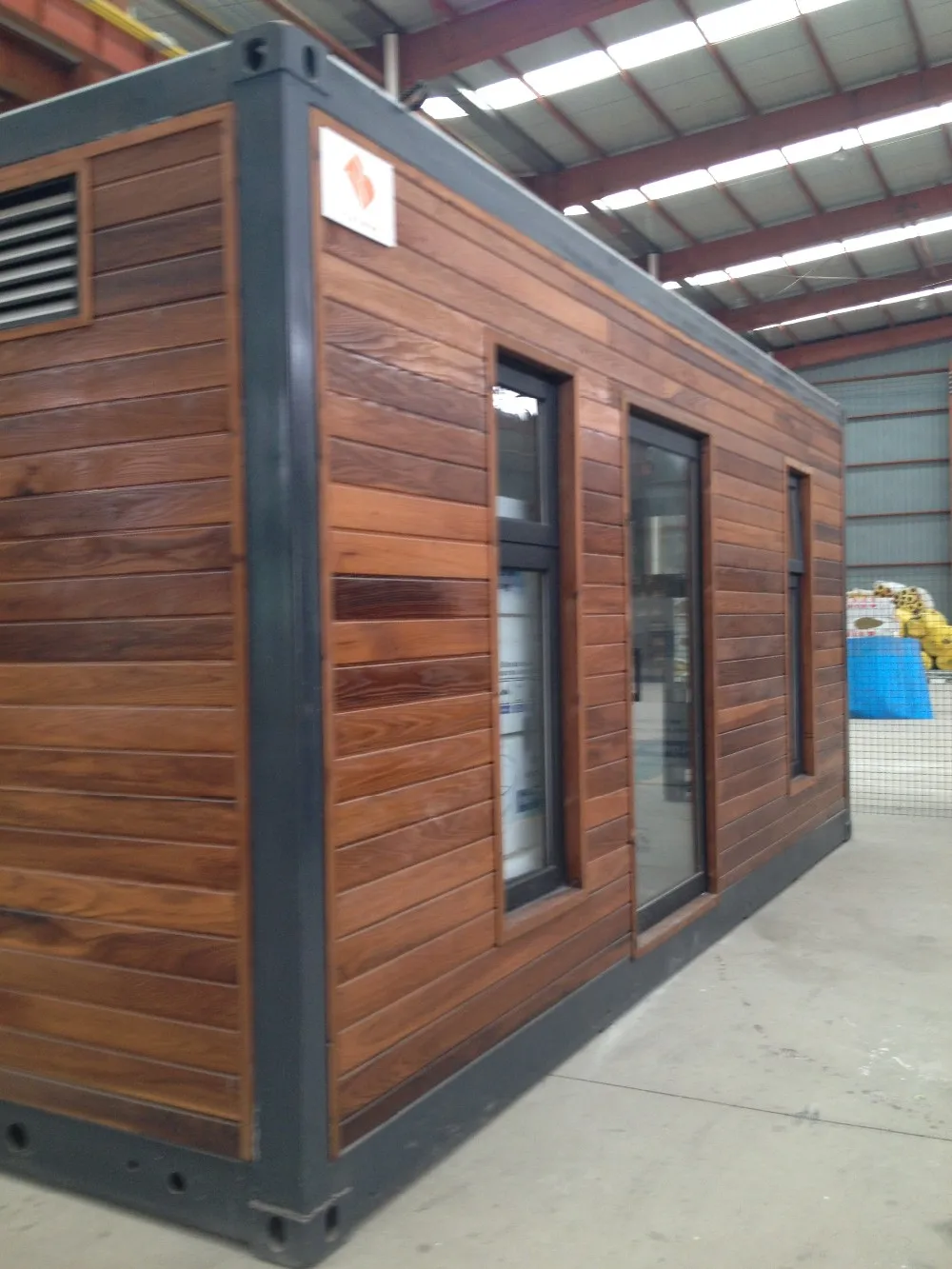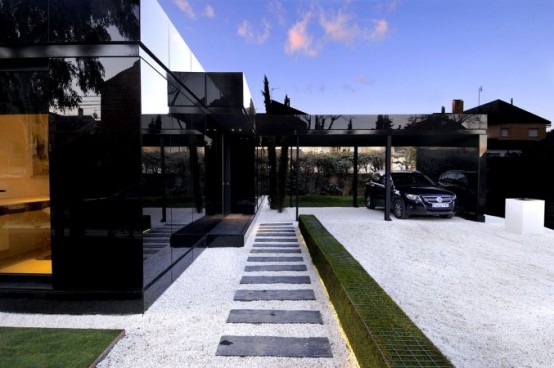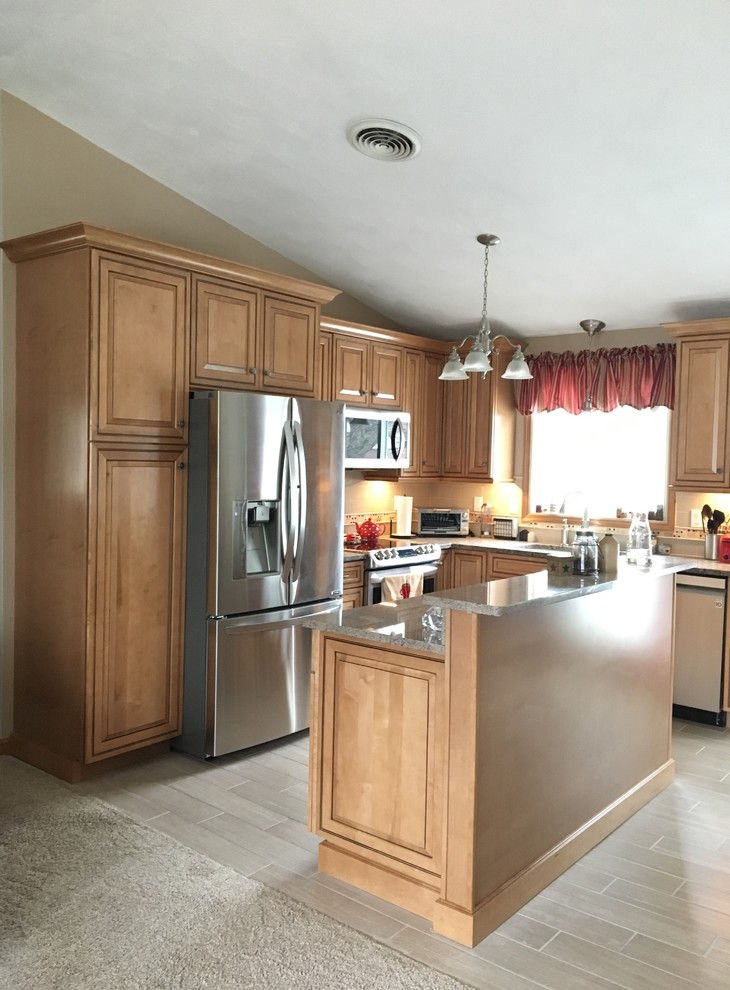Table of Content
As the prefab and modular home industry grows in popularity in the United States, several companies have staked their claim as providers of affordable prefab and modular homes. One of the primary benefits of prefab and modular home construction is that a majority of the construction process occurs off-site, in specialized facilities, allowing for a more precise manufacturing process. This minimizes the risk of cost-overruns and allows companies to offer homes at a good value. We would not necessarily call these cheap prefab homes or cheap modular homes - for us, that connotes poor quality and value. But depending on your location, prefab construction , can be cheaper than traditional, site-built homes, all while maintaining a high degree of workmanship and aesthetics.
… and earthy look of this wooden prefab house convey uncomplicated finesse with minimalist precision. Goodness of the surrounding landscape adds to the homey feel of the graceful facade. Leaving the interior finishing and choices of kitchen and bathrooms to the client’s tastes. They’re committed to creating green and healthy homes and often incorporate green roofs, water catchment systems, and other sustainable technologies. They also incorporate a wide array of materials that are both renewable and recyclable, as well as materials that are ageless and long-lasting.
Inexpensive Sustainable Homes Almost Anyone Can Afford
One theme that you may notice on some of these prefab kits is that energy efficiency is of the utmost importance. So, it should come as no surprise that the Eco Home Le Refuge S500 is designed with solar power in mind. The solar feature is used for heating, making the 513-square-foot tiny home not only more comfortable, but fully LEED platinum-certified. Improved Home Quality and Performance– Building home components in climate-controlled factories may improve the quality and consistency of building.

EZ Log Structures kit homes start at around $40 per square foot, though it can change depending on what customizations are included. At the low end of this cost spectrum, you should still be going with standard plans and making as few alterations as possible. When you get up toward $100,000, your options really start to multiply. You’re no longer constrained to the factory settings on your home and your potential square footage can jump as high as 2,000sq ft. If you’re building on a smaller plot of land and still want a yard, consider a two-story home as it will take up less of your property while still giving you substantial living space. Of the 8 scoring categories of the LEED rating system, among the more important standards is to ensure safe indoor air quality for occupants, which goes hand in hand with sustainable and eco-friendly building materials.
LivingHome 10
Origin 1 900, one of the company’s most popular offerings, cladding options include an all-wood look that dresses up the minimalist forms, or other looks that can make it your own. Several factors have contributed to it since the 2009 recession, and the impacts of Covid-19 have only served to compound the issue. Choosing a prefab home automatically connects you to skilled tradesmen at the factory. It’s faster, more accurate and you get fewer weather related quality issues. Depending on the scope of the project and the customization involved, it could take anywhere from a few weeks to a few months to get everything on-site to begin the build. Customizations can include plumbing and electricity, which can add to the costs, but this kit starts at just under $8,000.
Their portfolio ranges from a 600-square-foot, single-bedroom cottage to a 2,300-square-foot, four-bedroom family home. Clients choose their base model and preferred exterior cladding—fiber-cement clapboard, cedar shingles, charred cedar, or corrugated steel—as well as options for windows, trim, flooring, and interior hardware. Uses prefab techniques, but all of their homes are actually custom designs. The floor plans found on their website are just the springboard to help customers dream up their ideal green home–any aesthetic, any size. They use resource-efficient construction methods that produce less than 5 percent material waste—a vast improvement over the 25 percent waste that can result from conventional building techniques. It is no secret that construction waste disposal can rack up costs quickly.
Learn more about having a green home on a budget!
But with prefab kit homes, those costs are mitigated if not eliminated totally. This is because most of the waste has been either recycled or disposed of before it ever gets to you. Check your city disposal rates and it won’t take long to see the potential savings to be had. By now, you have surely noticed that there are more than a few offerings from Allwood on here. That is because they are among the easiest prefab kit homes to assemble. They are also some of the most affordable options as well and the Sommersby is no different.

If you’re looking for a home that inexpensive, modular is unfortunately probably not a good option for you. To stay on budget when building a home, you need to carefully plan the steps ahead, see below. Architects, engineers & home designers, if you don't know about it yet, see the free-to-use EC3 tool, an online carbon calculator to determine the carbon emissions of a home design and easily compare different materials. You will NOT be able to get a true modular home using a professional builder for under $50,000. A single Cube starts at $38,800 and is an adept small living space or even a studio or home office.
The advantages offered by state-of-the-art factory building conditions allows for improved home components and parts – like ultra-high insulated walls and rain-screen wall designs, and in the end better, more efficient home builds. You can get more living space by building either a traditional house addition or an accessory dwelling unit . Kountry Containers is based in Central Texas that we’ve touched on before in this modular home series. The company specializes in custom modular homes that are ultra-tiny, with usually no more than a bedroom and bathroom. We looked all over for a high quality home that fit our budget and were lucky enough to find this home. There are some prefab kit companies that will say things like two “handy” adults can build one of their prefabs in just a couple of days.

Prefab manufacturing results in far less material waste than traditional builds, thanks to the reduced risk of damage to materials or an unused surplus. And since materials are stored in a factory instead of on a construction site, they’re less likely to be stolen, vandalized, or damaged. Almost in their entirety at a factory), they are more quickly constructed than traditional stick-built homes. Prefabs also offer bold, distinctive style—often by top designers—without hiring an architect and without settling for an unsophisticated house plan. Prefab homes can be built for 50% less than their site-built counterparts.
The other reason we probably wouldn't suggest going Net Zero Energy in Quebec is because if the home is kept all electric for heat and light, the electricity used is almost entirely from renewable green sources anyway. In New York though, as an example, only 23 percent of electric is from renewable sources - so we would suggest considering a Net Zero Home with solar PV as a way to lighten the environmental load of homes in the region. It also makes great economic sense if building a home you intend to stay in for a while.
On top of that, manufactured homes are also subject to federal laws. Things like egress windows for bedrooms, smoke detectors being required, smoke generation standards in materials, the combustible materials found in water heaters, ranges, and more. If there were any doubts about their safety, they probably undergo more stringent regulations to ensure that they are safe no matter where they are built. The square footage requirements all come down to personal preference; some prefer the tiniest setups for a minimalist living experience while others prefer a little more room. The Star Energy Tiny Home is right in the middle, clocking in at 667 square feet.

No comments:
Post a Comment